Ancient inventions are beyond the understanding of today's science
In this day and age, we often feel surprised and impressed by the development of technology. However, if you look back more than 2,000 years ago, it is not difficult to find mechanical feats and amazing engineering products that were far ahead of their time. Many of them still carry unsolved mysteries to this day. Let me take a look at such amazing inventions of the ancients
Roman concrete, lasting thousands of years
The Roman Empire has long ceased to exist, but the architectural works they left behind still stand the test of time thanks to Roman concrete blocks that are among the strongest in the world. This building material of ancient Rome has long challenged scientists. Ancient Rome's formula for making concrete is an impressive feat in architectural history. Some Roman structures were built with spectacular beauty that modern builders would never dare attempt, even with today's technology.
The concrete used to construct many buildings and monuments in Rome was made from a mixture of limestone, sand and volcanic rock. The buildings and structures of ancient Rome, some of the most spectacular in the world, can still stand after being subjected to countless chemical and physical impacts over the course of 2,000 years. via. Previous research has found that Roman concrete is much more durable than modern concrete, which can only last about 120 years.
It was known that the volcanic sand used in Roman concrete and lime mortar helped their buildings last so long. Now, new research by a team of engineers and researchers has found the exact formula that gave Roman concrete the ability to last longer than today's concrete. Using the ancient recipe of the Roman architect Vitruvius, the researchers created a mortar mixture and let it harden for six months.
When observing with a microscope, they discovered dense clusters of minerals forming during the Roman mortar mixing process. The strätlingite (cement) crystals, formed by volcanic sand as it mixed with limestone, helped prevent the cracks from growing wider by reinforcing the interface between the surfaces, which were Weak bonds inside concrete blocks. This method not only helps concrete last longer, but also does not have a negative impact on the environment during production, because the mixture only needs to be heated to 900 degrees Celsius (instead of 1,450 degrees Celsius like modern concrete). .
Assyrian Nimrud lens
The Nimrud lenses are a 3,000-year-old crystalline rock excavated by Austen Henry Layard at the Assyrian palace at Nimrud*. According to conjecture, Nimrud was used by scientists of the ancient Assyrian empire as a natural lens, capable of "gathering" sunlight and creating fire. Nimrud lenses (also known as Layard lenses) are made from natural, oval-shaped crystal rock. It has a focal length of about 12 cm, equivalent to a magnifying glass with 3× magnification. Nimrud is located in northern Iraq, once the capital of the ancient Assyrian empire.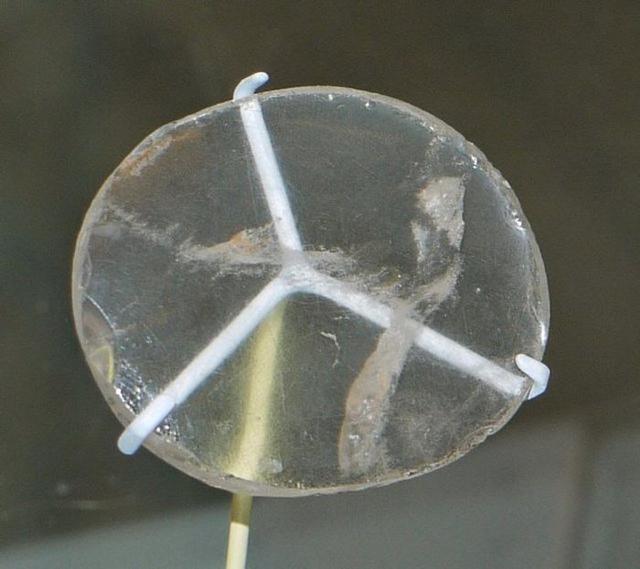
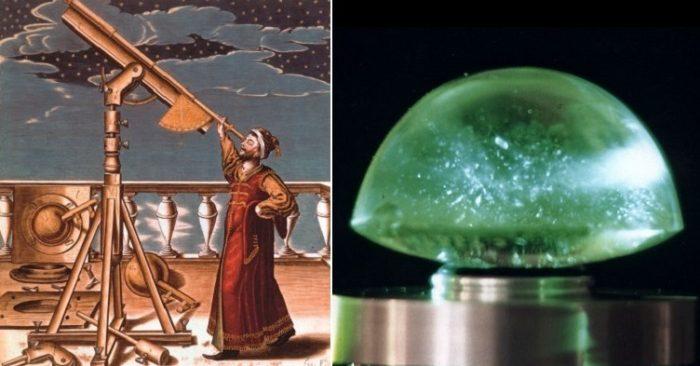
Italian scientist Giovanni Pettinato of the University of Rome believes that this celestial rock may have been used by the Assyrians to create astronomical telescopes. This hypothesis of his received the agreement of many colleagues as it partly explains why the Assyrians were so adept at astronomy.
Bat Da Battery
It seems that Mesopotamia was the first place to know how to make electricity, long before electricity was discovered. In the 1930s, a mysterious man-made object was discovered during an archaeological excavation carried out not far from the capital Bagdad. This object is called the Baghdad battery, shaped like a jar, about 13 cm high and has a corroded iron bar protruding from the mouth of the jar. In addition, a bronze cylinder was also found inside the jar and an iron rod was threaded into this cylinder.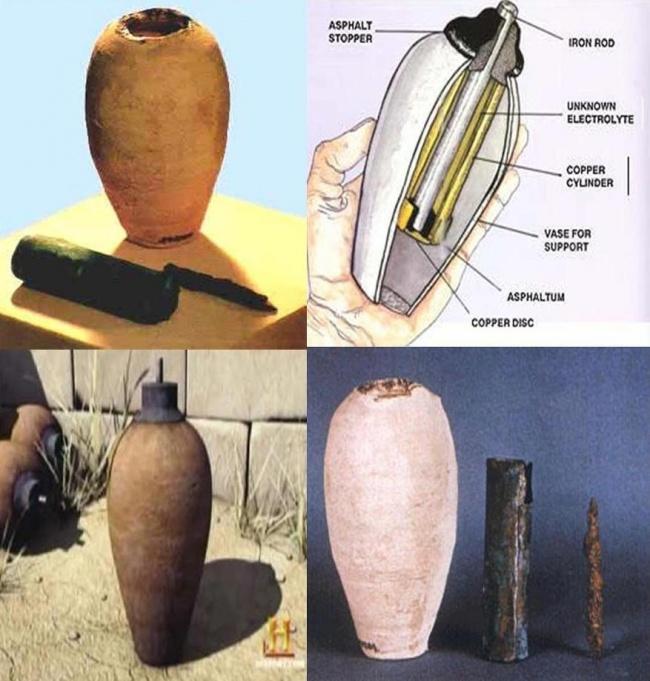
Through the examination process, experts determined that this was an "ancient" battery, capable of generating an electric current of about 1 Volt and perhaps once used for gold plating. However, if so, why was this method neglected for a long time and there was no evidence of its existence in neighboring areas?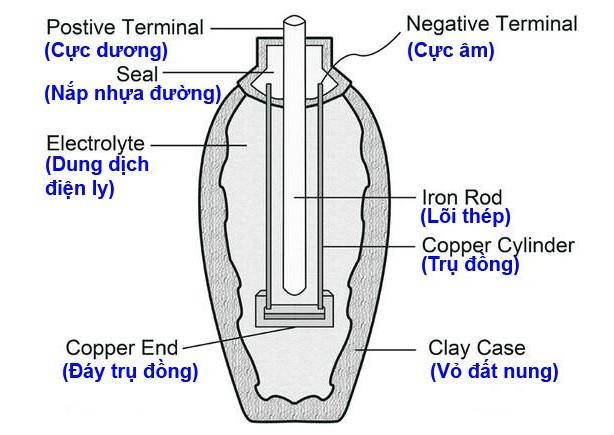
2000 year old earthquake prediction machine
Modern seismometers are extremely sensitive devices. By measuring the slightest movements of laser light or magnets, these devices can detect microscopic noises that are inaudible to the normal human ear. And with all this data available, humanity has continuously improved its understanding of geological events, developed early warning systems and found the safest ways to build structures. . But nearly 2000 years ago, when humans still did not understand what an earthquake was, someone invented an earthquake prediction device that was called a "miracle" at that time.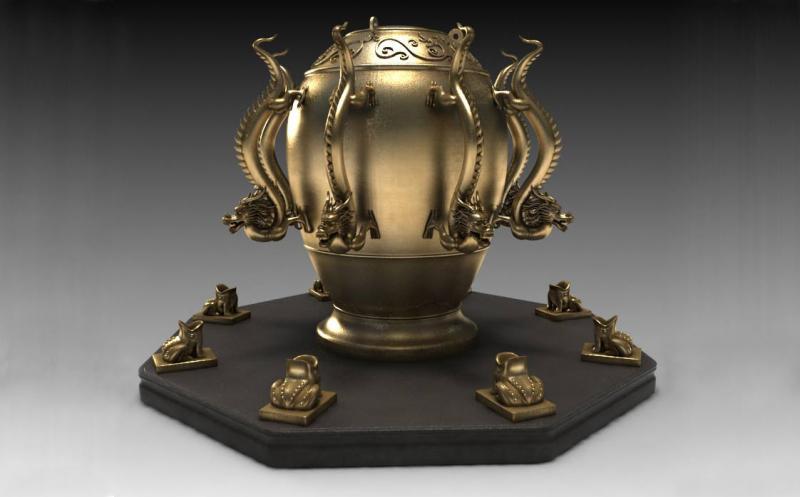
Truong Hanh (born 78 AD - died 139 AD), a scholar with profound knowledge who lived during the Eastern Han Dynasty of China. History records Truong Hanh's achievements as a multi-talented artist and master of all arts, such as an astronomer, mathematician, inventor, geographer, cartographer, and poet. But Truong Hanh is even more famous for inventing the world's first seismometer. Truong Hanh introduced the machine to civil and military officials at the Luoyang court in 132 AD (just 7 years before his death in 139 AD). Historical documents have described it as having a shape similar to a large bronze jar or jar.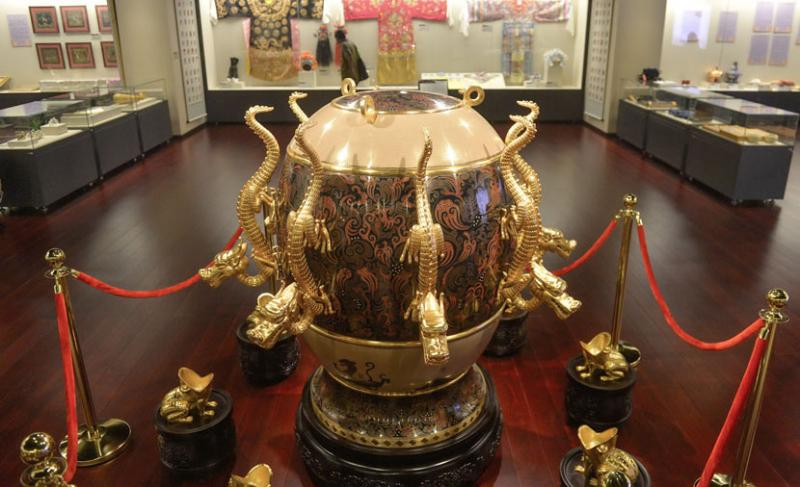
The outside is embossed with the image of eight dragons (Bat Long), each holding a bronze ball in its jaws. Right below the tool are eight bronze toads, whose mouths will receive the balls if they fall from above (in the dragon's mouth). Ancient texts often exaggerate the magical functions inside Truong Hanh's seismometer. But people today believe that inside the hollow body of the seismometer there is a pendulum hanging, and a lever mechanism is connected to each dragon that is attached to the pendulum on eight sides. The shock wave from an earthquake can cause the pendulum to vibrate and activate one of the mechanisms inside the copper instrument. Next, the dragons would release the ball and it would fall into the toad's mouth, this would signal to the court that not only was there an earthquake but also that the accompanying vibrations were involved.
Each dragon and toad is related to a compass point, so the court will quickly know exactly where a disaster is to send reinforcements. Initially, Truong Hanh's invention was met with skepticism from the courtiers. Truong Hanh's vision and interpretations were completely different from those of his contemporary bureaucrats, and worse, they were not proven. Then time passed, a few years later one day suddenly a ball fell from the dragon's mouth.
The civil and military mandarins were even more suspicious because there was no earthquake in the capital Lac Duong. But a few days later, news from an emergency messenger to the court said that there had been a strong earthquake a few hundred miles away from Luoyang, exactly west of the capital Luoyang, in the direction of Luoyang. One of the eight dragons holds a bronze ball. Truong Hanh called his seismograph machine Hau Phong Dia Dong Nghi. While many people living during Zhang Heng's time believed that earthquakes were a spiritual element, Zhang Heng himself and other scholars asserted that the events were caused by wind and changes in air pressure. is a science, and it was the seed of the plate tectonics hypothesis that emerged in the early 20th century. In the centuries after Zhang Heng's death, other Chinese scholars were said to have invented Other seismometers were inspired by the design of inventor Truong.
Ancient computer Antikythera
On May 17, 1902, while digging for bronze among artifacts on a Roman shipwreck in the Aegean Sea near the island of Antikythera (Greece), archaeologist Valerios Stais found a large piece of eaten metal. eroded at the bottom of the sea. According to archaeologists, the piece of metal is part of an ancient astronomical computer called the Antikythera mechanism. This event has just been commemorated by Google Doodle with an illustration of the largest part of the Antikythera computer, according to Space.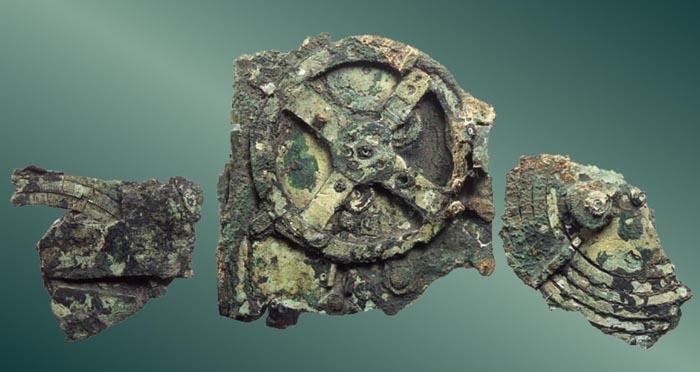
The origin of this machine has not been precisely determined, however some experts believe that it was created by one of the Pergamon people in the city of Korinthos, ancient Greece. Because the ship is said to have come from the island of Rhodes in the same direction as the city of Korinthos, and this place is still considered an important center of astronomy and mechanics in ancient times. It is an astronomical supercomputer of the ancient world, demonstrating a masterful level of science and technology of the ancient Greeks.
The most mysterious thing about the Antikythera machine is its mechanism. Inside this machine there are 30 gears of different sizes cleverly placed in a wooden frame. It is believed that its function is to predict the positions of stars and planets, as well as the time of the moon. and eclipse. Antikythera is considered a very advanced and technologically modern device that until the years after 1500 there was no mechanical device superior to it. It was not until the 14th century that the first astronomical devices with gears were created. Experts believe that this device works extremely accurately, and can predict the positions of planets such as Mercury, Venus, Mars, Jupiter and Saturn so accurately that there is only one error. small after 500 years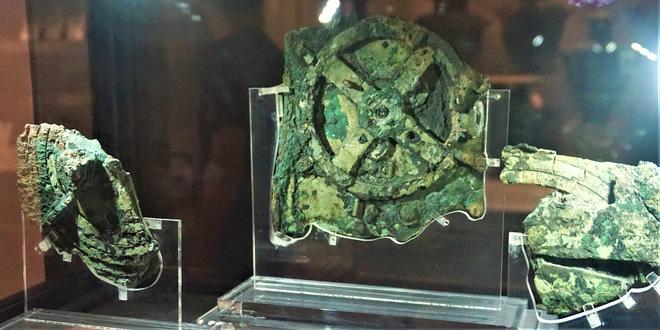
Using 3D X-ray imaging, researchers discovered that this ancient machine has 37 gears and 2 clock-shaped front and back sides. It is located in a thin wooden box measuring 31.5 x 19 x 10 cm. The machine is a 365-day calendar, which can include leap years. It can determine the position of the moon, sun and planets as they move through the zodiac, indicate the lunar phase at the current time, calculate the time of solar and lunar eclipses according to Eclipse cycle. This function can be used for religious purposes when a solar eclipse is considered a bad omen. The machine was also a stellar almanac, giving the times when the major stars or constellations of the Greek zodiac would rise and set.




































